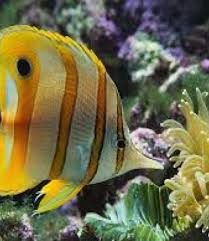Dragons in the Chinese Spring Festival Celebrations
The Chinese Spring Festival, or Chinese New Year (春节, Chūn Jié), is the most important and widely celebrated festival in China, rich with traditions, cultural practices, and symbolism. Among the many iconic elements that make up this vibrant celebration, one of the most prominent symbols is the dragon. The dragon, a powerful and majestic creature in Chinese culture, is deeply intertwined with the Spring Festival’s spirit, embodying both prosperity and vitality for the coming year.
This article delves into the significance of dragons in the Chinese Spring Festival, exploring their roles in various celebrations, rituals, and performances. It will highlight how dragons symbolize auspiciousness, protection, and good fortune, and how they have been woven into the very fabric of Chinese New Year traditions over centuries.
1. The Dragon as a Symbol of Good Luck in the Spring Festival
In Chinese culture, the dragon is seen as a symbol of imperial power, strength, and good fortune. It is believed to bring prosperity, success, and harmony, making it an ideal figure to celebrate the Spring Festival.
During the New Year festivities, the dragon symbolizes the invocation of good luck, health, and wealth for the family and community. The belief that the dragon can drive away evil spirits and protect homes from misfortune has led to its widespread use in both public performances and private rituals during the New Year season.
The image of the dragon is often found in decorations, fireworks, and clothing, setting the tone for a prosperous year ahead. By invoking the dragon’s auspicious power, people aim to create a positive atmosphere that encourages good fortune in the coming months.
2. Dragon Dance: The Heart of Spring Festival Celebrations
One of the most popular and spectacular features of the Spring Festival is the Dragon Dance (舞龙, Wǔ Lóng), a traditional performance that showcases the energy and vitality of the dragon. The dragon dance is not only a form of entertainment but also a ritual believed to bring good luck, abundant harvests, and peace to the community.
2.1 The History and Evolution of the Dragon Dance
The origin of the dragon dance can be traced back to the Han Dynasty (206 BCE – 220 CE), and it has evolved over centuries to become one of the most essential elements of the Spring Festival. In ancient China, the dance was performed during the Lantern Festival (元宵节, Yuánxiāo Jié) to celebrate the arrival of the first full moon of the lunar year, but over time, it became a staple of New Year celebrations.
In a typical dragon dance, performers carry a long dragon costume made of fabric, wood, and bamboo, supported by poles, which is moved in a synchronized manner to mimic the undulating movement of a real dragon. The dragon can span over several meters, and multiple dancers are needed to animate the dragon, each taking responsibility for a section of its body. The dance is accompanied by drumming, cymbals, and firecrackers, creating a dynamic and celebratory atmosphere.
2.2 The Symbolism of the Dragon Dance
The dragon dance has deep symbolic meaning, representing the chasing away of evil spirits and the welcoming of the new year with joy and abundance. The colorful dragon in the dance is often seen as a representation of vital energy (Qi), with its energetic and graceful movements intended to usher in prosperity.
The dragon’s movements during the dance are also thought to bring life force and happiness to the community. As the dancers move in coordinated unison, they create the illusion that the dragon is alive and full of energy, symbolizing the arrival of a new season filled with renewed hope and vitality.
The dragon dance is performed in parades, streets, and public squares throughout China, and it has spread to Chinese communities worldwide, becoming an iconic part of the global Chinese New Year celebration.
3. The Dragon and the Lantern Festival
The Lantern Festival (元宵节), which marks the end of the Spring Festival and falls on the 15th day of the first lunar month, is another celebration where dragons play an essential role. The Lantern Festival is famous for its beautiful lantern displays, family reunions, and, most importantly, the continuation of the dragon dance.
During the Lantern Festival, dragons are often depicted in illuminated lanterns that are displayed in public spaces. These lanterns, intricately designed to showcase the dragon’s majestic form, are part of a grand procession where people can admire the dragon’s symbolic power while enjoying a night of festivity and light.
In addition to the dragon lanterns, the dragon dance is also performed as a part of the Lantern Festival celebration, completing the Spring Festival’s cycle of dragon-related activities. The dragon’s presence at this festival is seen as a culmination of the year’s wishes for prosperity, wealth, and happiness.
4. The Role of the Dragon in Chinese New Year Decorations
The Spring Festival is a time for decorating homes and public spaces to invite good fortune, and dragons play a prominent role in these decorations. Throughout China, people adorn their homes with various forms of dragon imagery, from paper cuttings to paintings and embroidered textiles.
4.1 Dragon Imagery on New Year Couplets
During Chinese New Year, families decorate their doorways with spring couplets (春联, Chūn Lián), which are pairs of red banners featuring auspicious messages for the new year. In many cases, the couplets are adorned with dragon motifs, which are believed to bring good luck and harmony to the household. These banners, paired with images of phoenixes (representing empresses and female energy), reflect the harmony of the dragon and phoenix, two powerful creatures that represent imperial authority and balance in Chinese mythology.
4.2 Dragon Images on Lanterns and Ornaments
The dragon is also featured prominently on lanterns, red envelopes (红包, Hóng Bāo), and decorative ornaments that are placed in homes and businesses. The dragon-shaped lanterns that light up streets during the Spring Festival represent the energetic and dynamic nature of life, while the red envelopes often have dragons depicted on them, symbolizing the delivery of wealth and blessings to the recipient.
The use of dragons in decorations adds an element of aesthetic grandeur to the celebration and serves as a reminder of the spiritual significance of the dragon in Chinese culture.
5. The Dragon and Family Celebrations During Chinese New Year
The Spring Festival is not only a public celebration but also a time for family reunions. Dragons feature prominently in family gatherings and rituals that honor ancestors and deities. Many Chinese families display dragon figurines and images in their homes to bless the household with prosperity, harmony, and longevity in the coming year.
Additionally, families will often give red envelopes containing money to children, relatives, and employees, with dragon imagery on these envelopes representing the passage of good fortune to the next generation.
6. The Significance of the Dragon in Modern Chinese New Year Celebrations
In today’s rapidly evolving world, the dragon still plays a central role in the Spring Festival celebrations, both in traditional rituals and contemporary festivities. From dragon parades in the streets to global Chinese New Year celebrations, the image of the dragon transcends generations and remains an enduring symbol of prosperity, good fortune, and harmony.
The dragon dance, dragon-themed decorations, and dragon imagery in media continue to inspire millions around the world, demonstrating the dragon’s timeless cultural importance in Chinese society.
Conclusion
The dragon is not merely a mythical creature; it is a living embodiment of the spirit of the Spring Festival. Through its presence in dragon dances, lantern displays, decorations, and family rituals, the dragon brings good luck, wealth, and harmony to every household and community. As China celebrates the Chinese New Year, the dragon continues to be a powerful symbol of life, vitality, and prosperity, ensuring that the ancient traditions of the Spring Festival are kept alive and vibrant in the hearts of all who participate.


